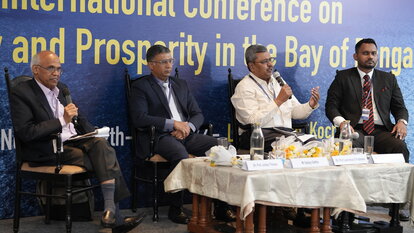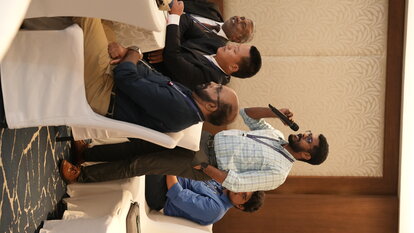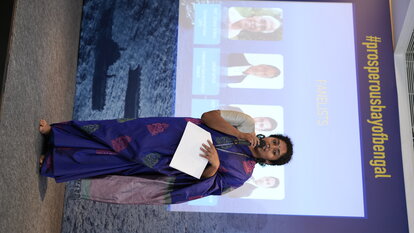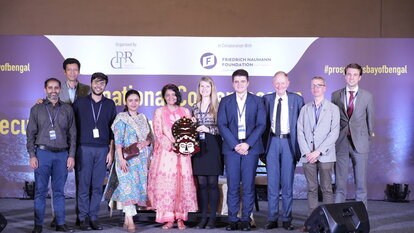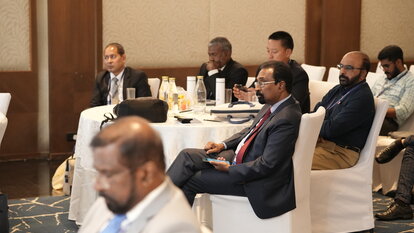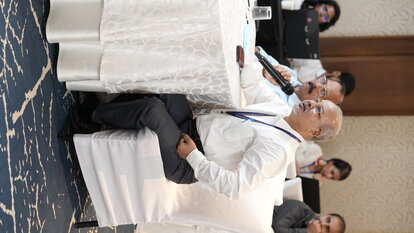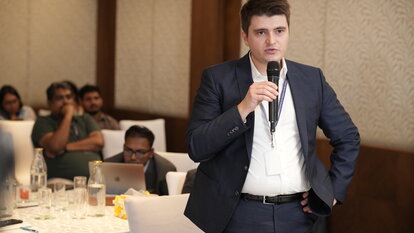Bay of Bengal
Developing Shared Prosperity and Security in the Bay of Bengal
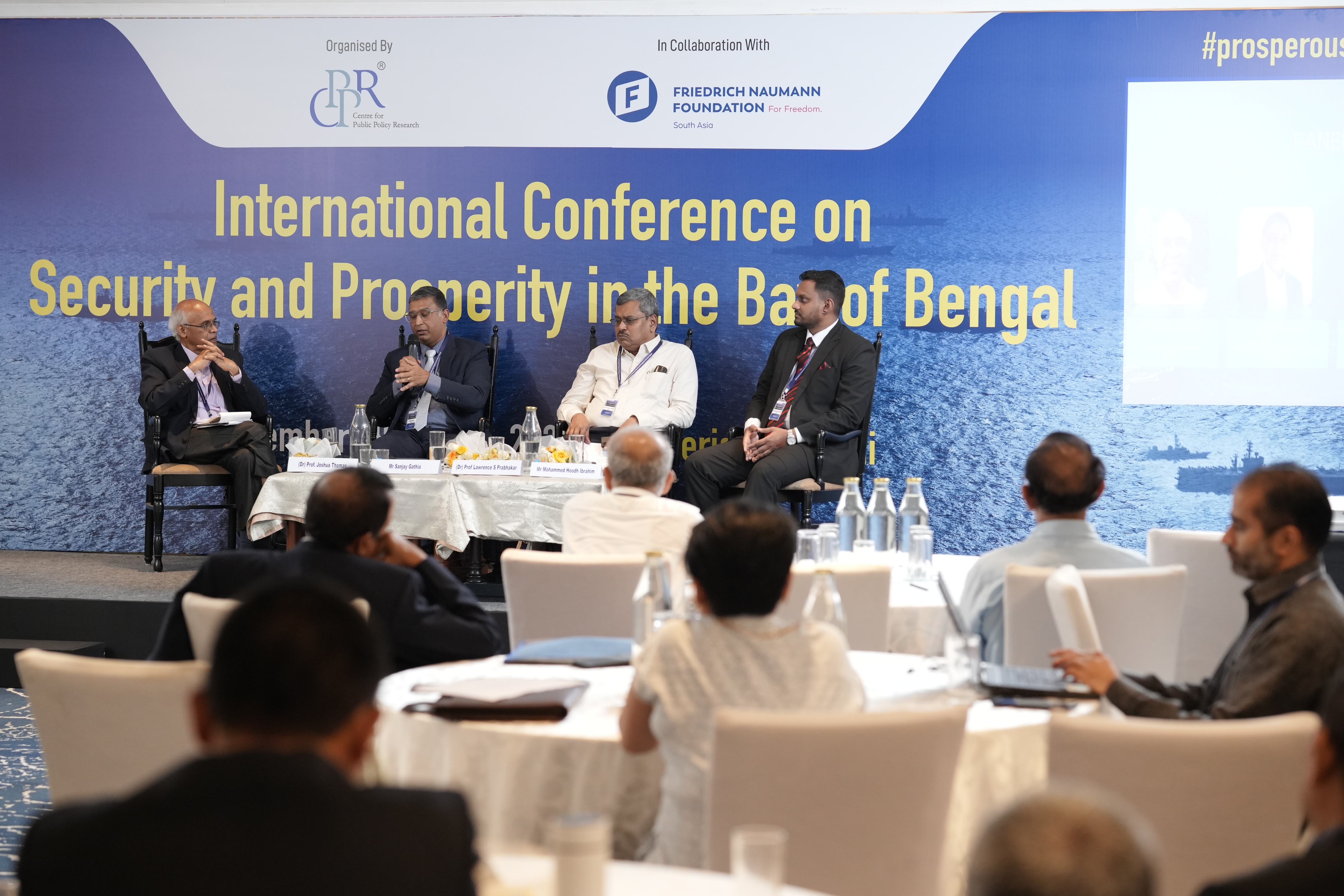
The Friedrich Naumann Foundation for Freedom (FNF) South Asia and Centre for Public Policy Research (CPPR) organized a day-long international conference, titled “Security and Prosperity in the Bay of Bengal,” which sought to highlight the difficulties, challenges and potential areas of cooperation in the South Asian region.
The inaugural session of the conference began with a Welcome Note by Dr. D. Dhanuraj, chairman of the CPPR, focusing on the need for greater solidarity within South Asia, harkening to Prime Minister Narendra Modi’s remarks during the BIMSTEC conference. The keynote address by Mr. N. Ramachandran, IPS (retd), outlined how any kind of security threat or challenge is a vicious cycle. He expressed that security is a shared responsibility and that all nations must come together and partner with each other in building a safe future. Today, the world order has shifted to the Indo - Pacific, the Bay of Bengal being an integral and strategic part of the same, and one cannot overlook the significance of geostrategic conversations on its security and prosperity. This, according to Sujeet Kumar, Member of Parliament, Rajya Sabha, is an important point, making the BIMSTEC an ideal platform to provide peace, stability and prosperity in the Bay of Bengal region. H.E. Mr. Nitirooge Phoneprasert, Consul-General of Thailand in Chennai, similarly stressed the importance of the region, which is not only a source of livelihood but also a valuable source of foreign exchange. The inaugural session ended with the release of Dr. Lawrence S. Prabhakar’s book “Maritime Security Complexes of the Indo-Pacific Region”.
The first session of the conference, titled “Prospects and challenges of the blue economy in the Bay of Bengal”, drew attention to the critical role of the blue economy in increasing livelihoods, especially in the fishery sector. The ability to harness blue energy is of vital importance for sustainable economic development and environmental preservation of coastal areas and oceans.
Dr. Abdul Hanan Waheed detailed the strength of the region’s GDP, with a slew of resources such as natural gas as well as the strategic advantage of proximity to the Malacca Strait alongside gas-producing nations. The focus on coastal inclusion within the blue economy’s framework is essential for community development, fisheries, regional and national seafood supply, value chains, maritime trade and supply chains, marine transportation, renewable energy, shipbuilding, the biotech industry, bioprocessing, submarine development, marine development and mariculture development.
To achieve a sustainable blue economy, Dr. P. Krishnan pointed out that there is a desperate need for cooperation and collaboration with a regional focus. The prospects of the blue economy, the use of ocean resources and preservation of the health of the oceans have become matters of priority for South Asia. According to Dr. Sevvandi Jayakody, transitioning into a sustainable blue economy needs effective transboundary initiatives that account for the needs of the region, echoed in inclusive policy frameworks. Stakeholders should be assured of their participation in a comprehensive forum and strive to secure their inclusion in the conversation. Regional cooperation at the multi-sectoral level and strong collaboration will contribute to the creation of a strong, dependable and reliable presence within the blue economy, fostering growth in the Bay of Bengal. Energy is one of the key sectors that can bring security, prosperity and cooperation to the region.
The second session of the international conference, titled “Towards enhanced energy cooperation in the Bay of Bengal,” positioned renewable energy as the top priority for governments, especially after the Ukraine crisis. However, the energy transition from fossil fuels, which 80% of the region’s population depends upon, is difficult to achieve. Ms. Gauri Singh highlighted the importance of the various technologies that are needed for energy transition, increasing a much-needed framework of interconnectedness while deepening engagement with energy diplomacy. The Bay of Bengal is rich in hydrocarbons, a resource that has not been optimally used. To increase energy cooperation in the Bay of Bengal, Admiral Jayanath Colombage specified five important areas of the energy sector that need cooperation, namely: the transportation of energy by sea (from the Persian Gulf), ensuring security of transport by sea, sustainable exploitation of energy resources in the region, bolstering of economic ability to purchase oil (taking Sri Lanka as a case study) and tapping into renewable energy. However, among other challenges, multilateral cooperation becomes a far-fetched goal in the region, where (according to Needrup Zangpo of Bhutan), geopolitics often comes into play when deliberating on energy resource sharing, given bilateralism has always been the norm.
The Bay of Bengal connects seven countries and enables 20 percent of world trade, making it an important leg of connectivity, prosperity and opportunity through trade and investment. The third session of the conference titled “Fostering regional development through trade and investment” focused on aspects of connectivity in terms of infrastructure. Dr. R. P. Pradhan focused on 3C-connectivity (enhancing transport and other linkages), competitiveness (which will benefit small economies) and enhancing community-building processes. Infrastructure connectivity, developing institutional connectivity between private and government sectors and people-to-people connectivity are means by which the region can foster development and cooperation. Mr. Madhurjya Kumar Dutta of Thailand stated that the greater Mekong region has implemented the 3C model and proven to be a successful model of cooperation.
The fourth session of the conference examined the potential gains of cooperation in environmental sustainability in the Bay of Bengal, laying out some crucial steps to enhance said cooperation and environmental protection. The importance of effective national policy changes and modifications in practices on ground on issues such as unsustainable growth must be considered within the context of bilateral and multilateral agendas. There is a need to improve the mechanism aimed at tackling marine debris and littering. Along with environmental protection, addressing human security was a key issue that was discussed in the fifth session of the conference titled “Addressing human security challenges through institutional mechanisms”. The conversation hovered over issues such as the refugee crisis, internal displacement, climate change, economic security, food security and health security. The population of the Bay of Bengal requires a climate security working group, a comprehensive framework to address climate-induced migration and a SAARC disaster-management center that has unfettered coordination. Connectivity and collaboration are key in not only addressing these issues but also fostering development and increasing potential for technological development in the Bay of Bengal. The sixth session on “Emerging technological advancement and innovation in the Bay of Bengal” highlighted the importance of engaging with the younger generation and prioritizing the transition to clean energies.
Admiral Jayanath Colombage, during the valedictory session, summarized the various insights drawn during the conference by describing the Bay of Bengal in eight words: strategic competition, strategic convergence, strategic dilemma and strategic ambiguity. The final plenary session on “the pivot to Southeast Asia” highlighted cooperation between South Asian countries and ASEAN as the next step and recommended emulation of ASEAN’s interconnectedness to BIMSTEC.
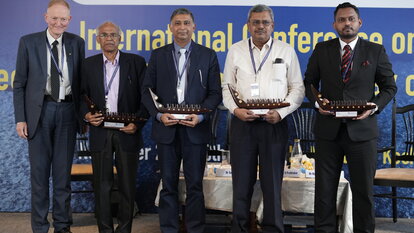
Security Conference on Bay of Bengal
